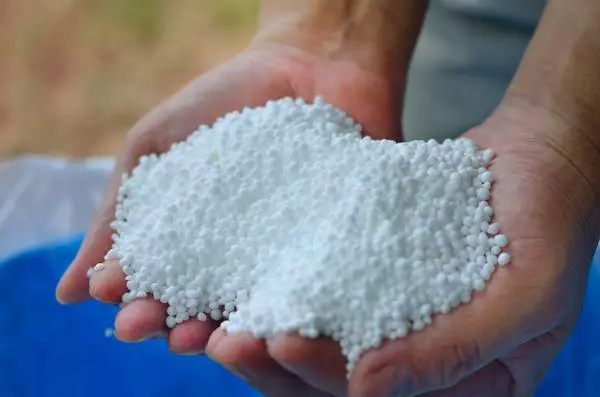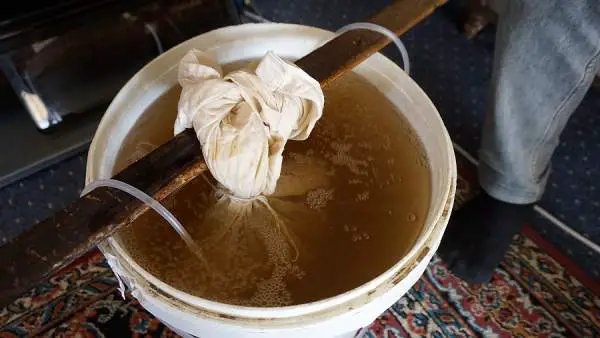Regular fertilizers are much cheaper to purchase than hydroponic nutrients, and for this reason, many new growers consider using them in their hydroponic systems. On paper, this seems all well and good, but there are reasons why this might not be the best solution.
Can you use regular fertilizer for hydroponics? Yes, it is possible to use regular fertilizer for hydroponics, but in reality, you shouldn’t. Regular fertilizers lack many compounds that purpose-built hydroponic nutrients contain, and they can cause problems at different stages of growth.
If you are considering using regular fertilizer in your hydroponic system, you should read the information below because a couple of questions are answered as for why this could be a big mistake.
Understanding Plant Nutrition
Nutrients in conventional growing
Before even considering using regular fertilizer as a replacement for hydroponic nutrients, every grower needs to understand what plants need for proper plant growth. The first nutrients are non-mineral such as oxygen, carbon, and hydrogen, where carbon dioxide and oxygen are received from the atmosphere, and water providing the hydrogen.
All these are created during photosynthesis which all plants need to do to survive.
In the cycle of life, dead things fall to the floor and are broken down which returns all of the nutrients back into the soil. If the earth is lacking in nutrients, or they are growing in container gardens, gardeners can supplement the missing nutrients by adding fertilizers.
Fertilizer and Nutrients
All fertilizers need three primary nutrients, and when you look to purchase any form of fertilizer, you need to check the packaging to ensure they are included.
Nitrogen (N): This helps make plant cells and chlorophyll (green leaves) which is required for photosynthesis. Nitrogen makes up between 40 – 50% of plant cells dry matter and promotes healthy foliage, and proper plant development through root absorption. Nitrogen levels are increased in growth nutrients.
Phosphorous (P): This is needed for photosynthesis, and a plants root development as well as when the plant blooms. Another function is the creation of nucleic acid which is vital for any living cell. This is important all through a plants growth, but uptake is increased during the flowering phase.
Potassium (K): This is also required for photosynthesis, and protein and carbohydrate creation. It also helps with a plants internal liquid movement in the roots and stems. This compound aids in overall fruit quality.
There are many other minerals and trace elements which are included in fertilizers, but their impact will be less than the three mentioned above. You can also see each of these can be tailored for different stages of plant growth.
It is for this reason, many hydroponic nutrients are sold as a 3-part solution, and each is used at a specific time as a plant is growing. Regular fertilizers are unable to do this because they are just a mix of nutrients and trace elements used as a supplement of what is already in the soil.
Because there is no soil in hydroponic systems, a regular fertilizer can leave plants lacking in some areas while overloading them in others.
What Should Hydroponic Fertilizers Contain?
To make sure your plants receive all they require, the following elements should be in the fertilizer you choose to purchase. It should be noted there can be different varieties of fertilizer for different plant types, so levels of certain nutrients will be higher or lower, and in most cases, this will be the N, P, K ratios which differ.
These two lists cover the essential elements of what needs to be included.
Macro-nutrients
- Nitrogen (N)
- Phosphorus (P)
- Potassium (K)
- Calcium (Ca)
- Sulfur (S)
- Magnesium (Mg)
- Iron (Fe)
Micro-elements
- Manganese (Mn)
- Boron (B)
- Zinc (Zn)
- Copper (Cu)
- Molybdenum (Mo)
Regular Fertilizer and Hydroponic Salt Buildup
There are small amounts of salts present in all nutrient solutions. If the compounds are not set at specific levels for use in a hydroponic system, there will be an increased accumulation of salts and minerals.
What happens is when the growing media is repeatedly soaked, and there is evaporation occurring before the plants have a chance to be absorbed by the plant’s root system. On each feeding cycle, small amounts are left behind once the cycle has ended.
Moisture evaporates and leaves behind these minerals, which includes these salt particles. The EC (Electrical Conductivity) increases in the growing media and on the root system. Once this happens, there is an increase in osmotic pressure on the root system which prevents osmosis, and the plant’s ability to take in water and nutrients. To stop this happening make sure to regularly test the EC of your solution – we’ve written a full guide to testing can be found here.
Regular fertilizers are not balanced so there can be an excess of these salts remaining. Plant growth can be retarded, and they darken and harden. In more extreme cases, roots take on a burnt appearance as they slowly die.
Flower Drop Using Regular Fertilizer
Aside from the visible salt build up which can be seen as white crystals forming on top of the growing media, and around pipes and pots in the ebb and flow systems. There are severe consequences for the plants themselves as a result.
Because a regular fertilizer doesn’t have the increased levels of N, P, and K as you find in a 3-part nutrient pack, and the EC levels will rise with the salt build up as mentioned earlier. Plants can quickly suffer from vital mineral deficiency. This, in turn, causes slower plant and fruit development, and causes this ‘flower drop.’
Flower drop can also be caused by water stress which comes from high EC levels and lack of irrigation. As we saw, both of these are symptoms of salt build up from using unbalanced nutrients.
Testing for Increased EC Levels
Regardless of what fertilizer you use in your hydroponic system, you should periodically check the EC levels of your nutrients. This can help forewarn you of any salt build up. The EC of your nutrient solution should not vary much as it flows through your plants rooting systems. If you have an EC which increases as it flows from your plants, it is a sign you have a potential salt build up problem.
Higher EC levels indicate there is more salt in the water, as an example, distilled water doesn’t have an EC level because it contains no salts.
Preventing Excess Salt Accumulation
Minimizing excess salt accumulation in a system helps growers avoid potential problems. So, by paying attention to feeding schedules and how it affects growing plants and root zones. There are many products which are highly concentrated or imbalanced. Regular fertilizer being an example of an unbalanced fertilizer for hydroponic use. It can be easy to increase levels in certain elements in the root zone of your plants without realizing.
Too much fertilizer often leads to not only all the problems mentioned but also wasted nutrients and lower yields overall. When you research what nutrients are required by the plants you are growing, you can choose, or formulate your own nutrient solution which delivers the right amounts of every element your plants need for a healthy growth phase.
Feeding schedules might need decreasing, so there are less evaporation and more uptake from your plants. Choice of growth media can also help to minimize these salt buildups, so a growing medium which offers good drainage is required.
Conclusion
With all of the information above, you can see that using regular fertilizer in hydroponic systems doesn’t really offer any benefits aside from being cheaper alternatives. Price alone should be no reason to opt for one nutrient solution over another.
One final thing which hasn’t yet been mentioned are pH levels when you add nutrients. A regular fertilizer can drastically raise or lower your pH levels, whereas, purchased nutrients or fertilizers which are explicitly designed for hydroponics often come with pH buffers built in. You can learn how to test the pH levels of your setup with our handy guide.
Regular fertilizers are an all in one solution, but as we already know, there is no all in one solution when it comes to hydroponics. To get the best from our plants, we need to provide them with the best of what they need, and choosing a good liquid nutrient solution can help prevent all of the problems above from using regular fertilizer.
Related Questions
Can you make organic hydroponic fertilizer?
Yes. Take 6 ounces of seaweed and wrap it in a piece of cheesecloth and tie it with twine. Soak for 5 days in 5 gallons of water in the sun. Add 1 teaspoon of Epsom salts for each gallon (5 spoons). Add all or 1 gallon at a time to your hydro reservoir. We’ve laid out our favourite DIY hydroponic nutrients in this article.
What is the best fertilizer for Hydroponics?
Commercial farmers might opt for dry fertilizers and mix their own. Hobby growers tend to choose the liquid variety which is already blended and more convenient. 3-1-2 NPK ratios work well.
Do organic nutrients make hydroponic food healthier to eat?
No, although plants need these nutrients and minerals, they have no preference as to where they come from. To them, organic is precisely the same as non-organic varieties. Organic nutrients are more about making us feel better where they came from.





